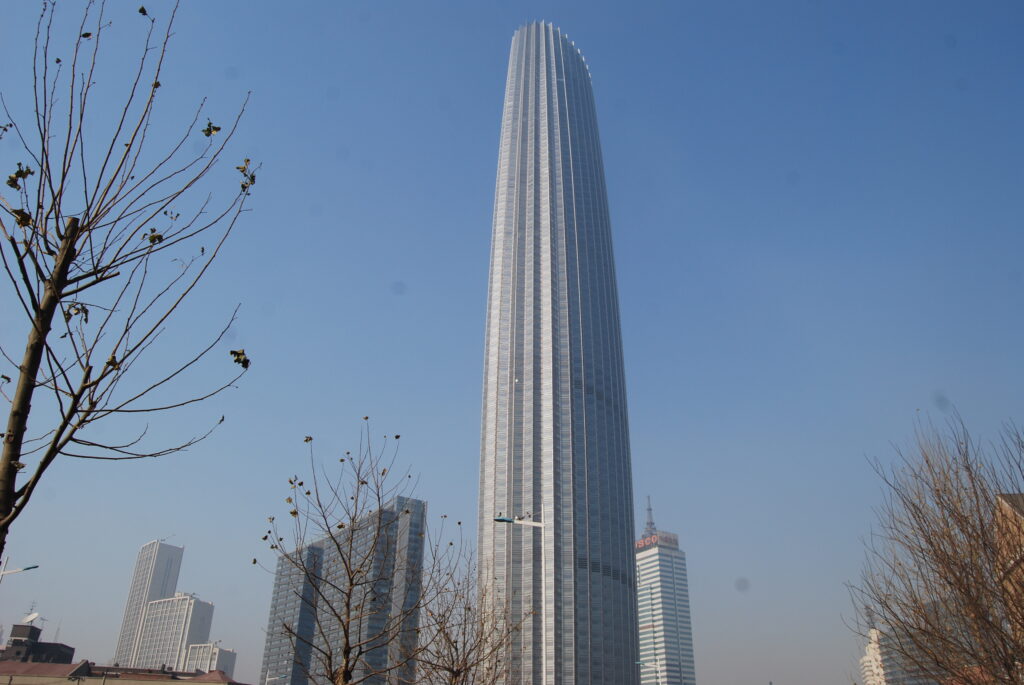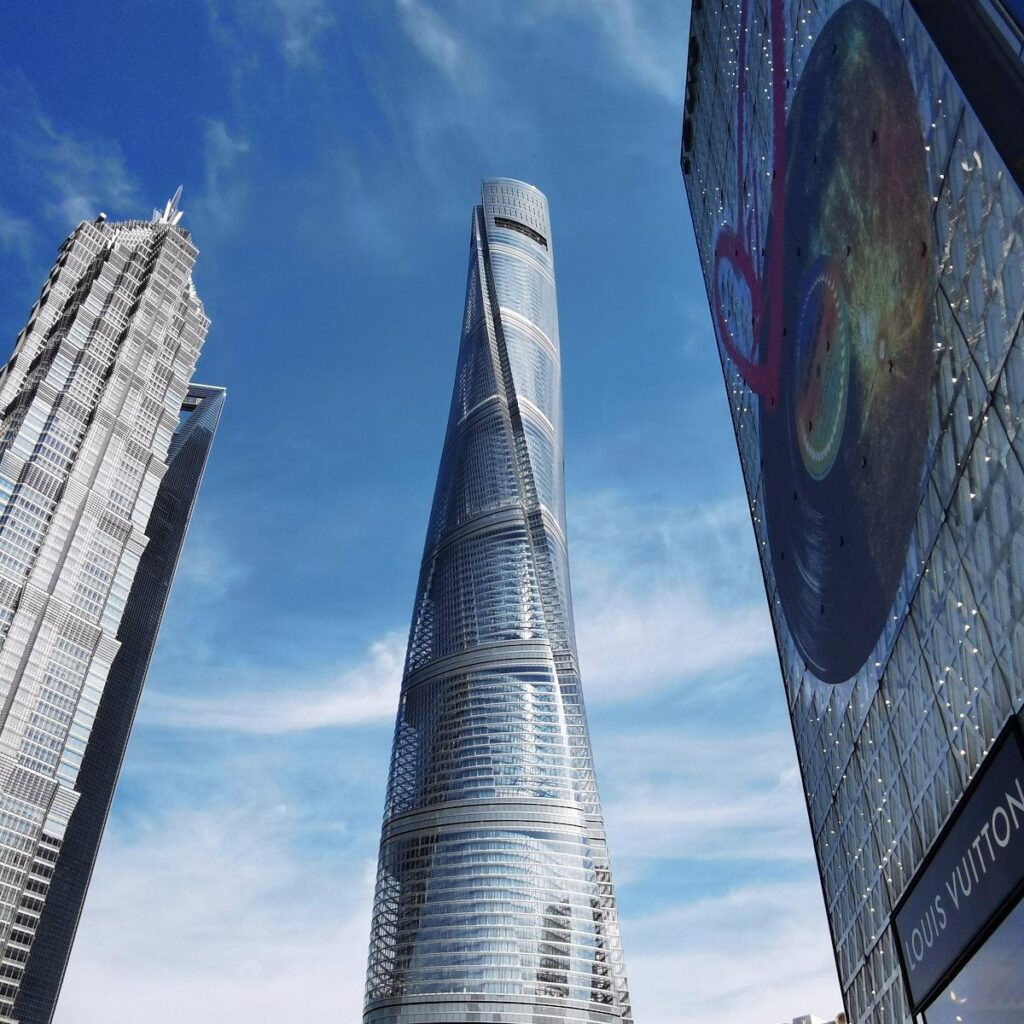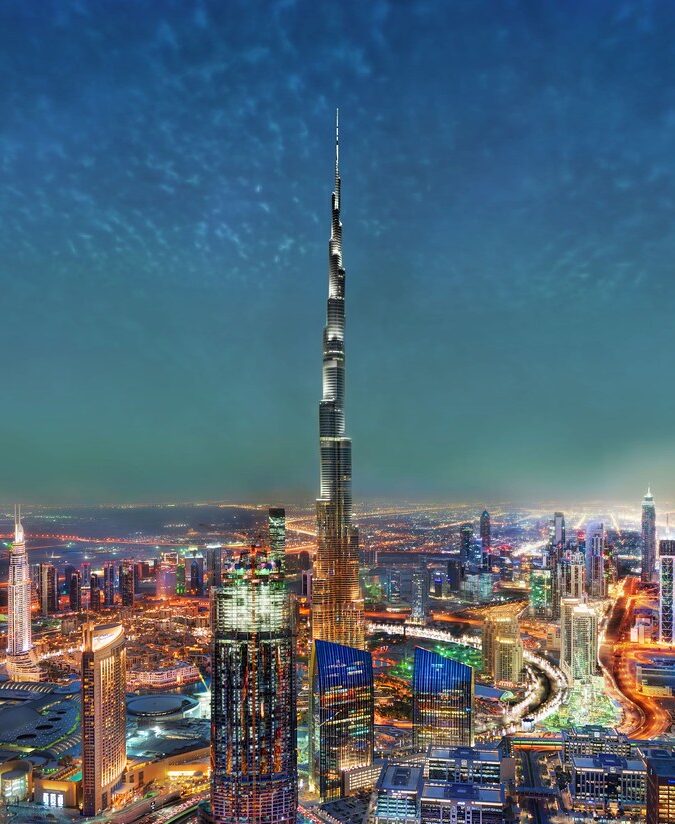This article discusses the top ten tallest buildings in the world, each of which is an amazing, extraordinary tall skyscraper. Nonetheless, these towering structures are outstanding examples of modern architecture that show how technology and civilization have advanced around the world. This tallest structure demonstrates how much a man may plan to build. Architecture and design are evolving to new heights that no one has ever attempted to cross or break. Modern architecture is an illustration of how technological design has advanced over time.
In order to address the lack of space and the population boom, taller buildings are being constructed. Modern buildings are taller, more intelligent overall, more effective, and more sustainable. An architectural marvel is created through the collaboration of architects, engineers, construction engineers, structural engineers, MEP, and numerous members of the construction sector. The top ten tallest buildings in the world are listed below (until new skyscrapers build).
10. TAIPEI 101

- Location: Taipei, Taiwan
- Design: Architect – C.Y. Lee & Partners
- Floors: 101 (+5 below ground)
- Construction: Completed in 2004
- Structure Height: 1667 Feet
- Type Of Usage: Office spaces & Retail shops
Taipei 101, originally the Taipei Global Financial Center in Taiwan, is the tenth-tallest structure among the top ten tallest buildings in the world. The renowned Taipei 101 was once known as the Taipei Global Financial Center. Taipei 101, the nation’s most iconic structure, has 101 floors, one less than the Empire State Building, another well-known landmark. The 1,667-foot-tall building houses offices, retail stores, and the two fastest elevators in the world.
Despite being one of the tallest buildings in the world, Taipei 101 was the first structure to exceed the Burj Khalifa in Dubai as the tallest building in the world in 2003. The third-highest open-air observation deck in the world, located 392 meters above sea level, is located on the 91st floor of Taipei 101. The overall cost of building Taipei 101, which was created by the Taiwanese architectural company C.Y. Lee & Partners, was close to US $1.934 billion.
In addition to being the tallest building in the world, Taipei 101 also held some of the most outstanding records, including having the world’s fastest elevators, the world’s tallest sundial, and being recognized as the world’s tallest green skyscraper.
9. CHINA ZUN

- Location: Beijing, China
- Design: Architect – Kohn Pedersen Fox Associates
- Floors: 109 (+8 below ground)
- Construction: Completed in 2018
- Structure Height: 1731 Feet
- Type Of Usage: Office spaces, Hotels & Residential apartments
The CITIC Tower in Beijing is known by the endearing nickname China Zun. The structural engineer for the construction of this landmark tower was Arup, one of the most well-known international architecture firms in the world. Kohn Pedersen Fox Associates (KPF), a firm known for creating iconic structures, designed the skyscraper. The 1,731-foot-tall structure, with 109 stories above ground and eight more below, is located in Beijing’s Central Business District.
The building, which has a variety of uses, is yet another gem in a mixed-use development. Over 60 levels of workplaces, 20 floors of luxury apartments, and 20 floors of a 300-room hotel make up the tower. The first phase of this 108-floor building’s construction began in 2017, and the second phase began in 2018. The opening of China Zun, Beijing’s tallest structure, took place in March 2019.
8. TIANJIN CTF FINANCE CENTRE

- Location: Tianjin, China
- Design: Architect – Skidmore, Owings, and Merrill LLP Architects
- Floors: 97 (+4 below ground)
- Construction: Completed in 2019
- Structure Height: 1739 Feet
- Type Of Usage: Office spaces, Hotels & Residential apartments
Ronald Lu & Partners and Skidmore, Owings & Merrill LLP collaborated to develop the Tianjin CTF Financial Center, the eight tallest structure among the top ten tallest buildings in the world. The tower, which has a LEED Gold rating, is the best illustration of a sustainable, high-performance skyscraper and is situated in China. The building has a square foundation that tapers from bottom to top, giving it the appearance of a polyline. The 97-story tower houses A-class offices, opulent serviced apartments, and a five-star Rosewood hotel. After Goldin Financial 117, the skyscraper is the second-tallest structure in Tianjin.
By controlling the powerful wind forces, the curved mega-columns of the façade structure’s soft curve design ensure stability. When we look higher, the vertical stacking of floor plates decreases. Maximum stability and resistance against adverse environmental conditions were built into the structure (Strong wind and Seismic forces). Not only that, but the Tianjin CTF Tower is an excellent example of how structural expression and an inventive structural system can be combined to create a strong, efficient, and cost-effective construction.
7. GUANGZHOU CTF FINANCE CENTRE

- Location: Guangzhou, China
- Design: Architect – Kohn Pedersen Fox Associates
- Floors: 111 (+5 below ground)
- Construction: Completed in 2016
- Structure Height: 1739 Feet
- Type Of Usage: Commercial spaces, Hotels, Residential apartments & Office spaces
The Guangzhou CTF Financial Center, the third-tallest building in China and the seventh-tallest building in the world, is situated in Guangzhou. Guangzhou, China, is home to the stunning Guangzhou West Tower, which stands 1,739 feet tall and has 111 floors of offices, residences, hotels, and conference space. The building has four components that seamlessly transition into one another, and as one goes higher, the floor plate gets smaller (Structure tapers – Floor plate).
The tower’s observation deck, which is one of its best features and is located on the 111th floor, is a little lower than the Burj Khalifa’s deck, the highest observation deck in the world. The designers of the Guangzhou CTF Financial Centre constructed the façade out of glass and glazed terra cotta to make the exterior lights more environmentally friendly.
6. ONE WORLD TRADE CENTER

- Location: New York City, US
- Design: Architect – Owings, Skidmore, and Merrill LLP Architects
- Floors: 94 (+ 5 below ground)
- Construction: Completed in 2014
- Structure Height: 1776 Feet
- Type Of Usage: Office spaces
The One World Trade Center, also known as the Freedom Tower, is the focal point of the World Trade Center complex in Manhattan, New York. With a height of 1,776 feet, it is the tallest structure in the Western Hemisphere and the sixth tallest structure among the top ten tallest buildings in the world. Amidst the demolished skyscrapers that makeup that region’s skyline, The One WTC stands out as a modern symbol. The skyscraper’s façade is made up of eight triangles that come together to produce a prismatic shape that tapers towards the top of the tower. The tower has a 204-foot-tall, square platform that is covered with triple-laminated iron glass.
David Childs and his firm Skidmore, Owings & Merrill designed the world’s sixth-tallest skyscraper (SOM). The One World Trade Center has 71 elevators in total, each with a maximum speed of 23 miles per hour, allowing for a 60-second trip from the first floor to the 102nd story.
5. LOTTE WORLD TOWER

- Location: Seoul, South Korea
- Design: Architect – Kohn Pedersen Fox Associates
- Floors: 123 (+6 below ground)
- Construction: Completed in 2017
- Structure Height: 1819 Feet
- Type Of Usage: Commercial spaces, Residential apartments & Office spaces
One of the most recognizable international business monuments in South Korea is the 123-story Lotte World Tower. Lotte World in Seoul, the world’s fifth-tallest structure, houses the world’s largest indoor theme park, as well as an outdoor park, upscale hotels, theatres, and retail centers. It also houses a Korean folk museum. The fluid form of the tower was conceptualized from the exquisite and traditional Korean pottery. The stunning structure was designed by Kohn Pedersen Fox Associates, one of the world’s most renowned architectural firms with its headquarters in New York City.
The building’s structure is made to withstand wind and earthquake pressures up to magnitude 9. The tallest building in South Korea, this mixed-use skyscraper has prime/private offices, five-star hotels, high-end shops, apartments, and observation decks. The Lotte World Tower is a mixed-use structure with the Lotte Hotel on floors 76-101 and condominiums on floors 42-71. The remaining floors are mostly used for office space. The tower’s foundation weighs seven times more than the Eiffel Tower does.
4. PING AN FINANCE CENTER

- Location: Shenzhen, China
- Design: Architect – Kohn Pedersen Fox Associates (US firm)
- Floors: 115 (+5 below ground)
- Construction: Completed in 2017
- Structure Height: 1966 Feet
- Type Of Usage: Office spaces, Commercial spaces
The Ping An International Financial Centre, which opened in 2017, is the tallest structure in Shenzhen, the second tallest structure in China, and the fourth tallest structure among the world’s top ten tallest buildings. The building, which has around 100 office levels and room for 9,000 passengers and nearly 15,500 workers, also has a retail floor and a conference podium. The building is situated in an area that serves as both a connector between nearby commercial and residential regions and the iconic heart of Shenzhen’s economic district. By using stainless steel piers, the skyscraper’s topmost section’s tapered design reduces wind load by 40% and lightning’s impact on the structure.
Kohn Pedersen Fox Associates, a New York-based architectural firm, is also responsible for designing several other well-known infrastructures in China, such the Shanghai Global Financial Center and Chow Tai Fook Center. Thornton Tomasetti, another New York-based firm, was in charge of the building’s structural design. The floor area of this massive tower is expected to be 378,600 square meters. If the size of the building’s 11-story platform is also considered, the total square footage is 495,520 sq. mts.
3. ABRAJ AL-BAIT

- Location: Mecca, Saudi Arabia
- Design: Architect – Dar al – Handasah Shair and Partners + SL Rasch
- Floors: 120 (+3 below ground)
- Construction: Completed in 2012
- Structure Height: 1972 Feet
- Type Of Usage: Residential apartments, Hotel
The Abraj Al-Bait Clock Tower, at 1,972 feet tall and 120 stories, is now the world’s third tallest structure, trailing only China’s Shanghai Tower. The construction of the Abraj Al-Bait Clock Tower began in 2004 and was completed in less than six years. This third-tallest skyscraper in the world, designed by the Lebanese architecture firm Dar Al-Handasah, is also regarded as the costliest structure in the world due to its staggering $15 billion construction cost.
The structure is also the world’s largest in terms of floor area, with a total area of 1,500,000 m2. Although Big Ben is frequently mistaken for the world’s largest clock, it is significantly smaller than the distinctive Abraj Al-Bait Clock Tower. It has the world’s largest clock face, with a dial reaching 43 meters on each of its four sides.
2. SHANGHAI TOWER

- Location: Shanghai, China
- Design: Architect – Gensler
- Floors: 128 (+5 below ground)
- Construction: Completed in 2015
- Structure Height: 2073 Feet
- Type Of Usage: Office spaces, Commercial spaces
The Shanghai Tower in China is the second-tallest structure among the world’s top ten tallest buildings, standing 2,073 feet tall. The construction of this magnificent skyscraper began in 1997, but it was repeatedly postponed due to financial constraints. The Guangzhou CTF Financial Center’s elevator, which travels at a speed of around 21 meters per second, quickly overtook the tower’s incredible 20.5 meters per-second record for the second-fastest elevator in the world.
One of the most stunning structures in the world is Shanghai Tower, the second-tallest building in the world and property of the Shanghai City Government. It was designed by the multinational firm Gensler. The 128-story Pudong financial district skyscraper houses up to 270 wind turbines. It is located there. Each of the nine structures, or zones, is made up of nine cylindrical buildings and includes lovely gardens, cafes, and some retail spaces. The nine zones are combined into one structure with a glass façade.
1. BURJ KHALIFA

- Location: Dubai, United Arab Emirates
- Design: Architect – Skidmore, Owings, and Merrill LLP Architects
- Floors: 163 (+1 below ground)
- Construction: Completed in 2010
- Structure Height: 2717 Feet
- Type Of Usage: Residential apartments, Office spaces
The world’s tallest building, the Burj Khalifa, opened in central Dubai in January 2010. The Burj Khalifa is a massive 2,717-foot mixed-use skyscraper in Dubai. The design serves as the best illustration of an inventive structural system. To combat the wind force on the building as one rises higher, it is composed of structural steel and concrete and has a flower-like pattern. The skyscraper has 163 stories and is home to a number of opulent apartments, restaurants, five-star hotels, and business suits. One of the greatest and most beautiful structures ever built by humans.
All of this is recognized as the tallest building, tallest free-standing structure, tallest service elevator, highest observation deck, the highest number of stories, longest-distance elevator, and highest number of occupied floors in the world. The structure is listed in the Guinness Book of World Records as well.














